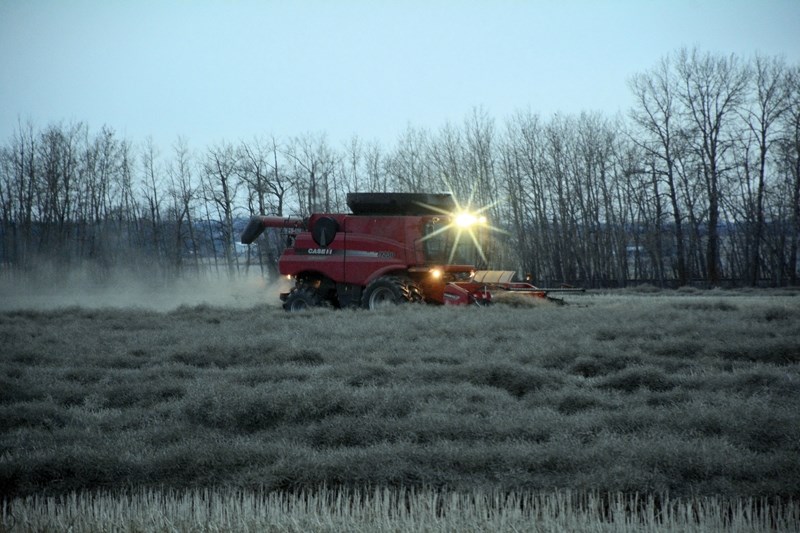Thorhild County has declared a state of agricultural disaster. Council made the unanimous decision Dec. 13 as a result of excessive moisture conditions in the summer and fall causing agricultural hardship on its producers.
Thorhild County has declared a state of agricultural disaster.
Council made the unanimous decision Dec. 13 as a result of excessive moisture conditions in the summer and fall causing agricultural hardship on its producers.
'The agriculture industry is a vital economic driver in the county," reeve Wayne Croswell said in a press release.
'By county council declaring a state of agricultural disaster in Thorhild County, council hopes to draw attention to the very difficult conditions facing all grain and livestock producers, and will request that provincial and federal government officials establish a disaster recovery program."
As a result of the wet conditions, Croswell said many farmers still have their crops in the field.
Through information from a Nov. 29 Alberta Crop report, the Agriculture Financial Services Corporation (AFSC) and the county's agriculture services department, agricultural fieldman Clarence Dowhan said they have all determined that about 45 per cent of crops remain unharvested.
'We consider crop reporting, our discussions with producers and visual inspections to determine whether a state of agricultural disaster should be declared," Dowhan said.
In a statement from the county, 20 per cent of cereal crops are still in the field and ranked as having an 'expected diminishing crop yield."
Oil seed crops are also approaching definite disaster thresholds, as 45 per cent are in swath and still standing.
On the other hand, hay crops have been cut and baled over most of the county, but quality has been affected and much of it remains in the field.
Of the 10 to 15 per cent of crops that were harvested in excessively wet conditions, producers now have the added expense of drying, repairing damaged machinery and losing their commodities to spoilage - both in the field and in storage.
Westlock County did not declare a state of agricultural disaster since its agriculture services department found 10 per cent or less of crops remained standing and Athabasca-Sturgeon-Redwater MLA Colin Piquette said that parts of Thorhild County and Athabasca County have been hardest hit.
'Different farmers have had different experiences, but I think the critical thing I found in the impacted areas is that they've got 20, 25, 30 per cent of their crops unharvested," he said. 'That was their margin, so that's having a significant impact."
Whether the 2016 harvest season will have a ripple effect on global commodity prices, Piquette said he didn't think so, since about 89 per cent of harvest was taken in successfully across the province, according to a Nov. 29 Alberta Crop Report.
'I'm not up-to-date as of today on what those commodity prices are and what other factors might be affecting them, but as far as changing the export price for our products here being tied directly to what's happening with harvest, I don't think it's significant enough to cause any big ups in the prices," he said.
However, through conversations with his constituents, Piquette has heard concerns about crop averages and payouts from wildlife damage, such as mice eating and contaminating crops.
To help mitigate the effects of these types of disasters, the province has offered a host of programs available through AFSC, such as agriculture insurance benefits, which does take into account wildlife damage and other concerns.
On Nov. 22, agriculture minister Oneil Carlier declared a province-wide state of agricultural disaster, which Piquette explained means that AFSC can take money that they have already collected from crop and insurance premiums to pay producers in advance.
'For farmers, when they've had more than 20 per cent of their crops left out in the field, there's Basic Unharvested (Acreage Benefit and) advance, where they can get about 25 per cent of the value of their coverage for their acres, minus the deductible," he noted. 'Then there's also supplementary insurance available."
He also said claims will not affect an individual farmer's premium and he encouraged those with unharvested crops to reach out to their AFSC contact to see if they can make a claim.
'It's basically what we did in 2014 with bad weather and hail claims, and 2015 when there was a drought," he said. 'It seems like there is an ongoing instability in our weather patterns. It's something that seems to be becoming more prevalent and thankfully, we do have an insurance system in place through AFSC to help farmers get through it."
